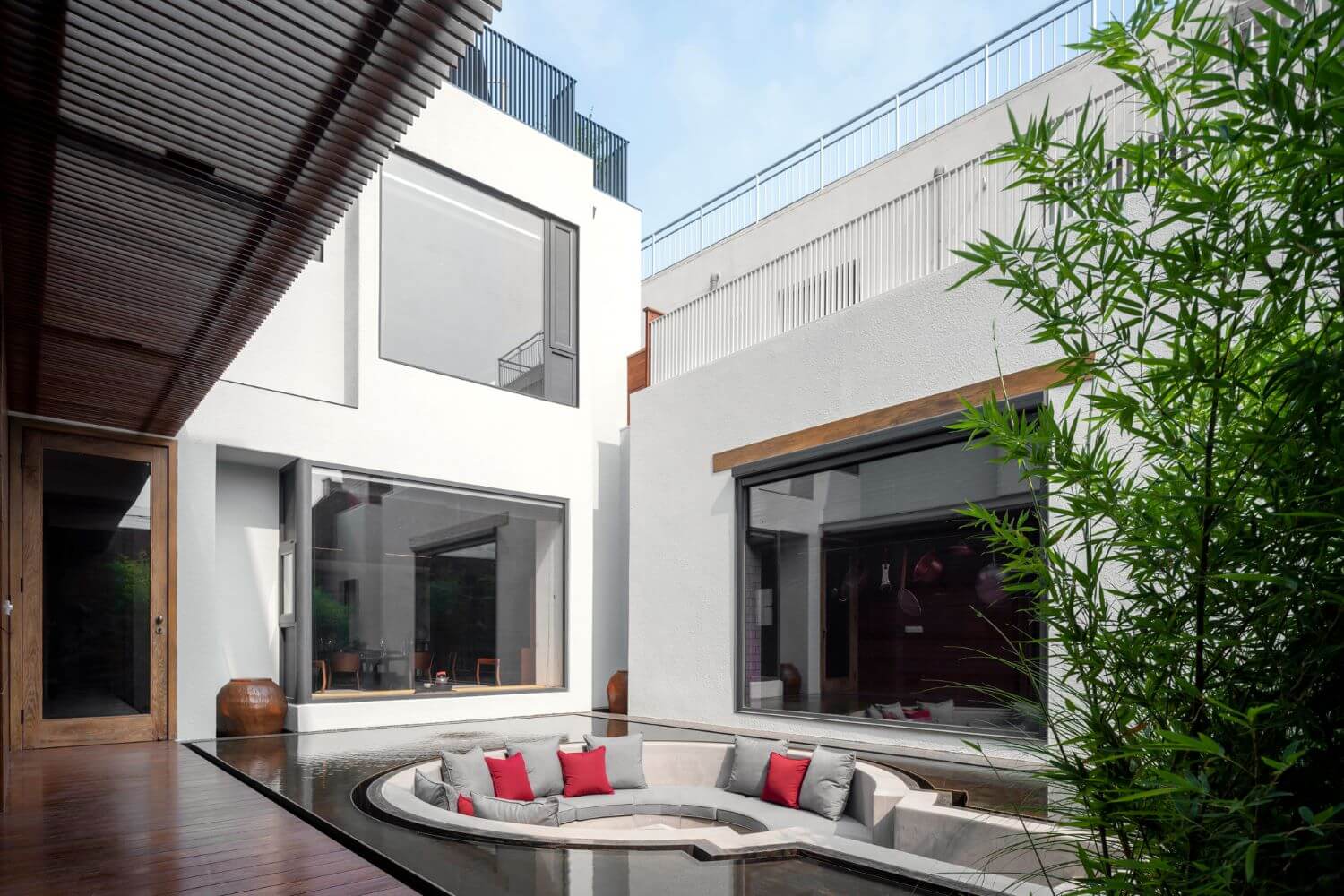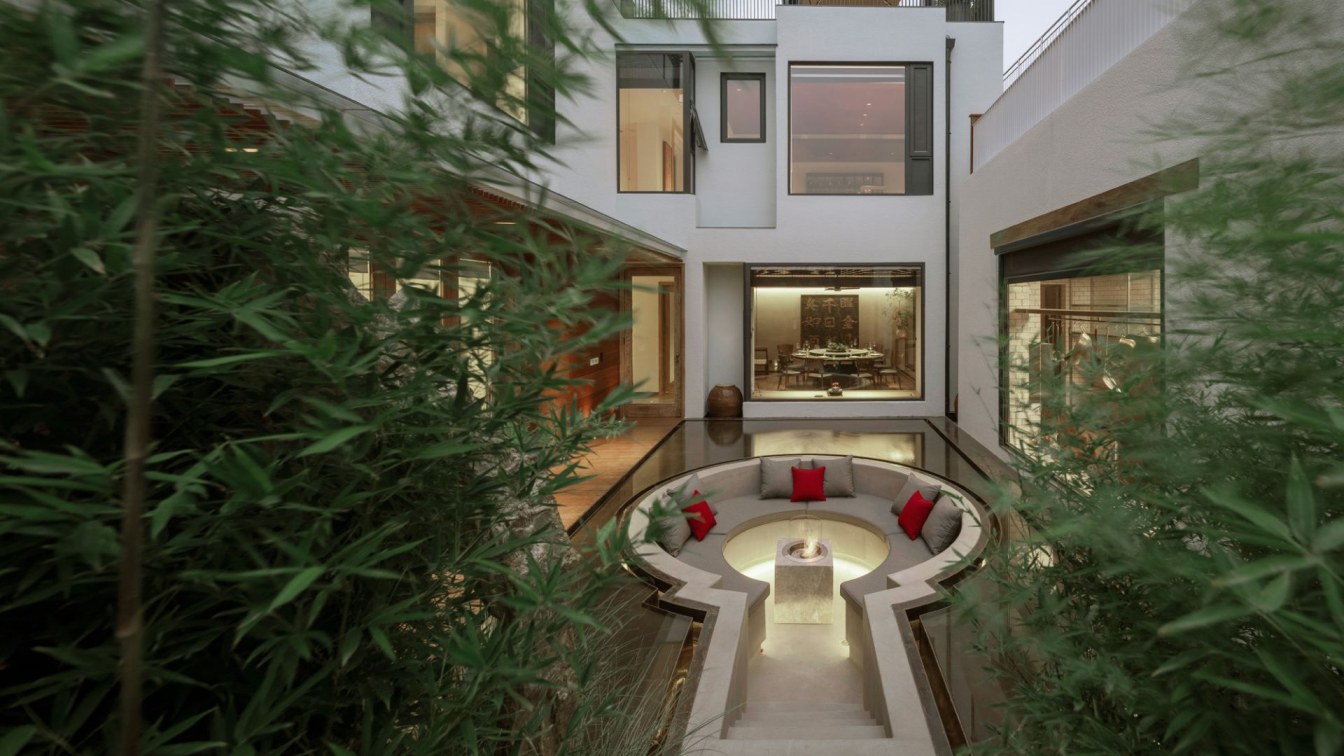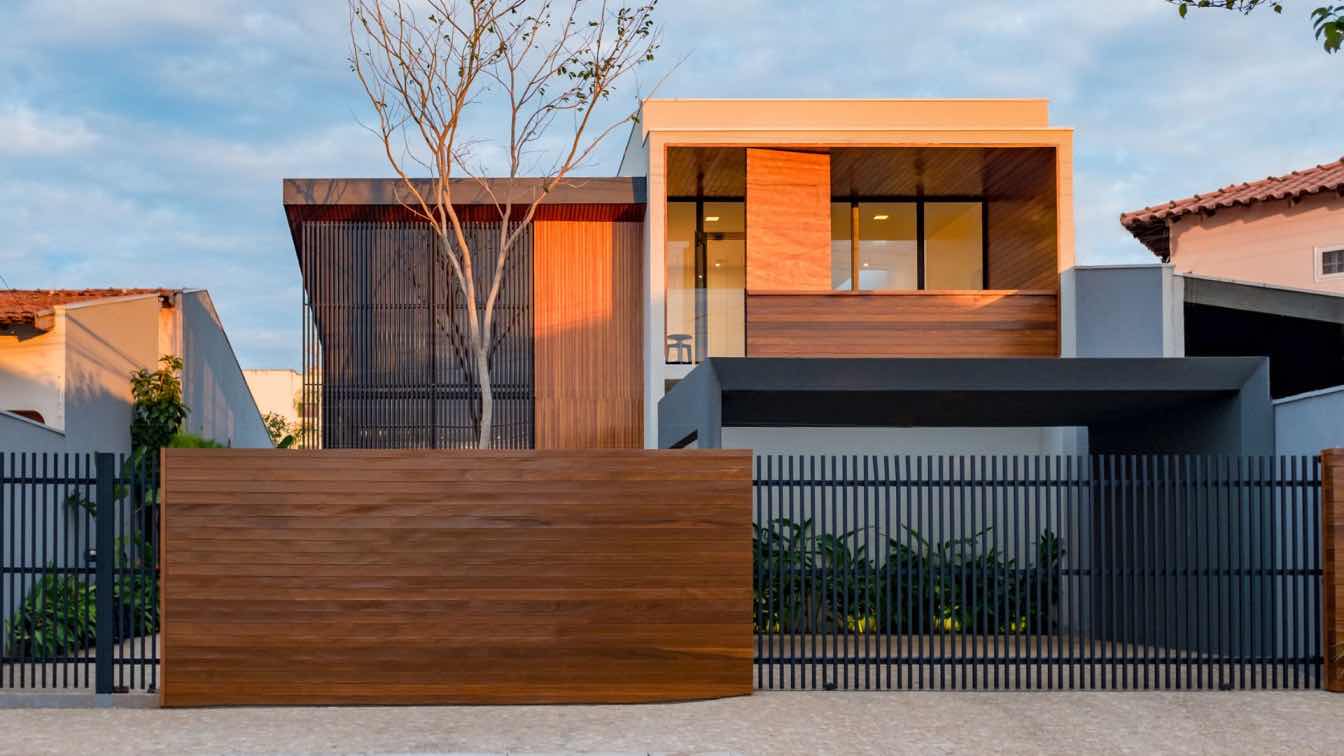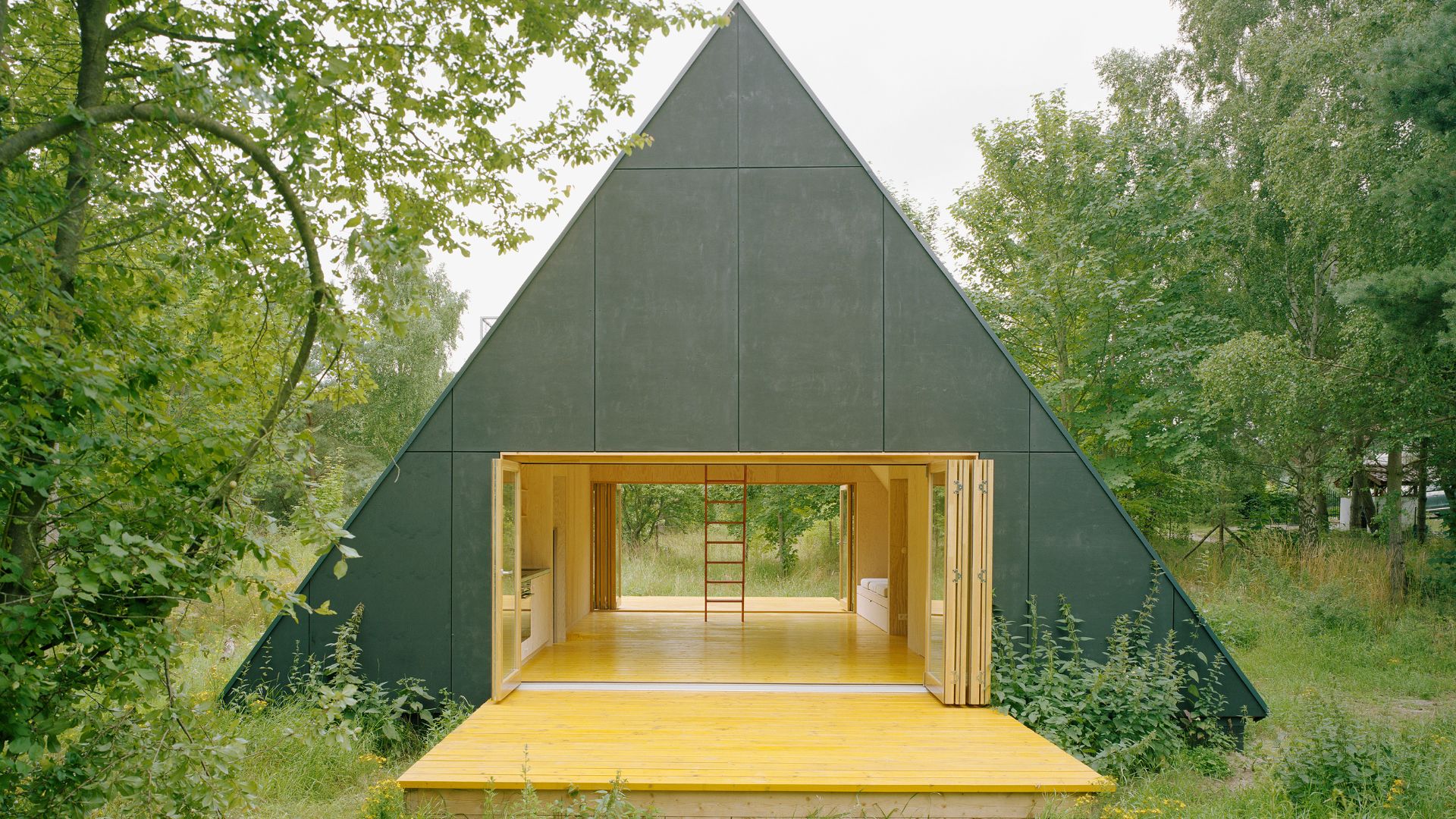Wang Daquan, Tanzo Space Design: Guan Zi Zai·Suburb House|Modernized Tradition Series
"When Avalokiteshvara Bodhisattva was practicing the profound prajna paramita, he illuminated the five skandhas and saw that they are all empty, and he crossed beyond all suffering and difficulty." - Heart Sutra
Named Guan Zi Zai (Sanskrit: avalokitêśvara, “looking on”) from Heart Sutra, the project intends to combine life experience and speculative insight. Located in the urban-rural fringe area, the project is based on the truth-seeking for the past, nature, and the human mind.
If it happens to be a footnote to big issues such as rural revitalization, it becomes a great surprise derived from this basis.
I / Intervention
Without presupposing purpose
The project is located in Haidian District, Beijing, where the famous Jingxi Rice and Qianlong Imperial Fields are no longer well known to young people. Under the nourishment of the Xishan Mountains and Yongding River, the villages in the joint region of urban and rural areas have taken over the baton of urban development. As a result, countryside houses may become the focus in this situation, influencing the villages and towns and the people there in the new era.
Wang Daquan, the designer of Tanzo Space Design was commissioned to complete the landscape and interior design for a two-story house. This red brick building constructed by local workers is no different from other houses in the village. The owner has an open attitude towards the interior design, which allows the complete presentation of Guan Zi Zai. Without any reference because of the maximized freedom, the designer proposed an intervening method without any presupposing purpose, which takes the physical environment and the owner's habits as the fundamental law and logic. Although slower, this process guarantees the right direction, which has been proven by fact.
II / Taking advantage of the situation
Appropriately
To arrange the air-conditioning pipeline and ventilation, the door head fixed plates form a double-sided slope, which unexpectedly looks like a small tower from a distance, and the owner likes its implied meaning of promoting to a higher position. What’s more, the black half-enclosed wall gives entering the door meaning of approaching and retreating.
This kind of flexible treatment runs through the entire design process, and only when one is in it can one realize that the village is far from static. For example, when the designer was still immersed in the landscape formed by the old roof ridges of the front and rear houses, the front house had already been demolished and become a two-story building with stainless steel railings. In the meantime, the narrow and sloping drainage gap between the two buildings required further adjustment of the interior structure.
A pavilion-like area was inserted in the center of the house, opening up the tense artificial interior space into the environment. Small amount of water was embedded in the sinking area enclosed by cement, among which the children often jump back and forth between the pools in the courtyard. The width of the water is just suitable for children’s stride.
Sitting around this small area shaped like a key, there are hundreds of millions of stars up in the sky and romantic moonlight nearby. The literati-style romance blends with the countryside, opening a life in a simple and lovely way. Taking advantage of the situation makes the emphasis relaxed, and Guan Zi Zai comes into being.

III / Compatibility
Creating experience
From a large-scale perspective, the house itself is the compatibility between practice and outside, so the designer should first make a container to carry them. Windows are open on the side with a view, and the window size is determined according to the landscape. The view of the Xishan Mountain and the river in front of the house pours in from the window, and natural light comes in from the skylight, thus different scenery can be seen on the first and second floors. The window in the kitchen turns the chef into a role on the stage, adding more fun and interaction except for cooking. When one can be seen, one can be respected.
The lines of the interior are firmly held together with the building texture, which supports the entire building together with the red brick and roof that embodies the sensibility and craftsmanship of the 1970s. The partially raw brick wall after demolishing the old staircase and the new white spiral staircase at the entrance constantly exchanged nostalgia and new stories.
From the exterior to the interior, the application of materials extends the sense of respect and rationality. Cement, solid wood, slab, glass, and steel plate are used to create richness and tension through collage and combination. At the same time, nature and the simplicity of the materials are used to control the space atmosphere in a comfortable and appropriate self-consistency. In this way, the design direction is defined by the material limitation.

IV / Improvisation
Surging vitality
Enough room left for materials and nature brings the harmonious integration between space, nature, and people. This dynamic balance makes the space full of vitality.
The sky in Beijing is sometimes gray, and the large area of white walls purifies the palette. A large number of bamboos are planted in the courtyard to represent the East, creating another natural landscape different from the villages and towns, like Beijing versus Jiangnan. Neither sunlight, rain nor sound is not isolated from the outdoor, and the southern canna and northern plants share the flower house together. The boundaries between the old and new, inside and outside, north and south, urban and rural areas are dissolving under the expression that there is room for approaching and retreating.
After the design is completed, the owner often invites friends to walk into the house at different times of the day. Every time he marvels at the unpredictable plant forms and flowing light and shadow; the guests will find a place to sit down as if at home and kids keep inventing new games; such great quiet improvisation is staging there all day long.

V / Countryside
Modernized tradition medium
Wang Daquan likes designs that "live in self-awareness". All interior furniture comes from domestic design brands, which are harmonious when put together because of their prior commonality; utensils of the Qing and Ming Dynasty return to daily life; the precious cliff stone-carved inscriptions exist with light and the times; the delicate artwork cut by the florist Wan Hong reveals a feeling of Song Dynasty at the end of the corridor; on the bay window couch facing the courtyard pool, a beam-lifting teapot sits silently; the abandoned Nu Er Hong rice wine jar has been transformed to add endless fun to courtyard nights.
The elements belonging to the imperial court and secular coexist in the same space, and the countryside has given a vast world for it. The traditional spiritual experience of the Chinese presents a natural state of stretching in the contemporary countryside. And the intervention of design is like dusting off so that the precious things appear.
The design starts from solving problems and slowly goes deep into the cultural and emotional part, just like rice growing out of the soil, natural and traceable.

conclusion
"I prefer to pay attention to the spatial characteristics and experience of a place. Using the harmony of space, light, and sound to impress people, without doing it deliberately, can make things have a human nature beyond imagination."
In addition to the full trust given by the house owner, the workers on site also gave full play to their creativity and worked together with the designer to overcome many complex construction difficulties according to local conditions. Through this creation by the participation of many people, the precious craftsman spirit is outstanding.
Prof. Cho-Yun Hsu said that the Chinese cultural spirit is the reconciliation of man and nature. From this point of view, the village and the people it nurtured have the natural endowment of perception and insight in advance. The design has practiced a vipassana and then waited for it to change.




























































About
In 2006, Mr. Wang Daquan, a senior interior architect of China, founded the Tanzo Space Design Office, a collection of brand, space, art, media, furnishings and other quality resources. A creative design agency for space-integrated design services. Commercial space upgrades, architectural space transformations, and cultural space designs are the main service for Tanzo Space Design. Including high-end customized boutique hotels, themed restaurants, and office space; planning and upgrading of industrial parks, building facades and interior space transformation; integrated cross-border design services for art galleries, libraries, and personalized private villas of the upstart family. Customers provide professional system solutions.
Since its establishment, it has reached friendly strategic partnerships with many boutique hotel real estate groups such as BTG, Wantong and Mingyu. Tanzo Space Design emphasizes the reconciliation of architecture and yin and yang, focuses on new and old, internal and external, sustainable development of humans and nature, integrates into a cross-cultural design language, and builds a humanistic quality design space at the forefront of the era. Tanzo Space strictly controls each design detail, emphasizes the high degree of completion of design drawings and built-in effects, and achieves efficient service and high-quality fine design.
Tanzo Space maintains long-term cooperation with outstanding teams in various fields and introduces top resources for customers. In the future, Tanzo Space will take a comprehensive perspective and integrate various types of high-quality resources in the industry chain to create a “Netease-selected” platform for architects. Maximize the value of design cooperation.
Founder Profile
Wang Daquan, the founder of Tanzo Space Design, a Chinese contemporary senior interior architect, cross-border artist and architectural design pioneer, is hailed as "the forerunner of China's boutique hotel and commercial space design." He studied at the Central Academy of Art and Design, and was a member of the Asia-Pacific Hotel Design Association. He studied at the Design Institute of the DA Design Institute and the Tsinghua Hotel in Italy.
Ivan Ballesteros Simon is a Spanish architect, designer, and artist. He was the chief architect of Beijing Lispace, the chief designer of the exhibition design department of Beijing Crystal Digital Technology Co., Ltd., and a partner and chief designer of Antifabric Corporation. He was awarded Tenerife. The first prize in the Monumento-Mirador competition in the landscape design of the island, the first prize in the bridge design and connectivity contest in the Noelia district of Canary Islands and the Santa Cruz Museum of Modern Art, and other awards.
Business Scope
Reconstruction of architectural space: Under the premise of retaining the basic structure of old buildings, combining the surrounding environment, architectural features, cultural history, and functions, adapting and reusing them, adjusting and renovating the external forms, internal structures, and technical systems of old buildings, etc. To adapt to the new needs of society, culture, technology, and functions, and to inject new vitality into the old buildings, giving them a second life, and creating a sustainable humanistic construction space.
Commercial space upgrade: In the new market environment, the nationwide consumer innovation, brand second upgrade, and new commercial space are becoming the “third space” outside the residential and office space, and it is one of the core markets for the present and the future. Continuing the core DNA of the brand, the "Third Space" design should adjust its thinking, evolve and upgrade to the 2.0 version of the "Scene Revolution", improve the customer experience and business efficiency, and create a new commercial space that integrates business, industry and science.
Cultural space transformation: transforming the original building into a new complex cultural space, integrating new functions such as art space, exhibitions, interactive experiences, and public events, creating a vital space and communication platform for exchanging knowledge, providing opportunities, and creating regional future cultural benchmarks use space design aesthetics to effectively enhance the brand's cultural expression and influence, as well as boost the sound development of the entire design industry.





